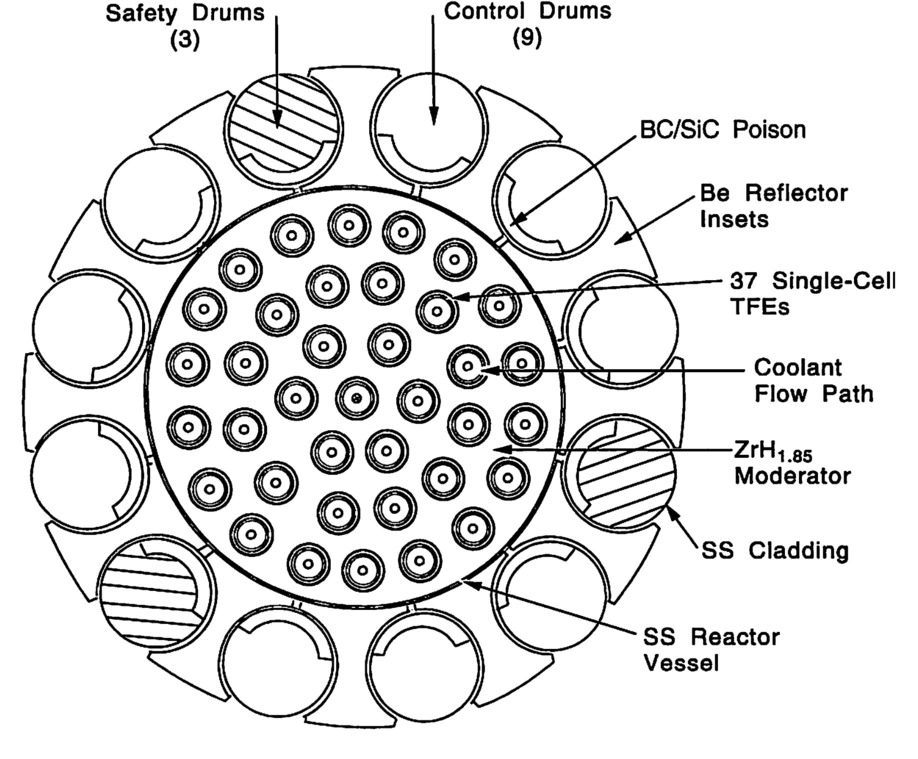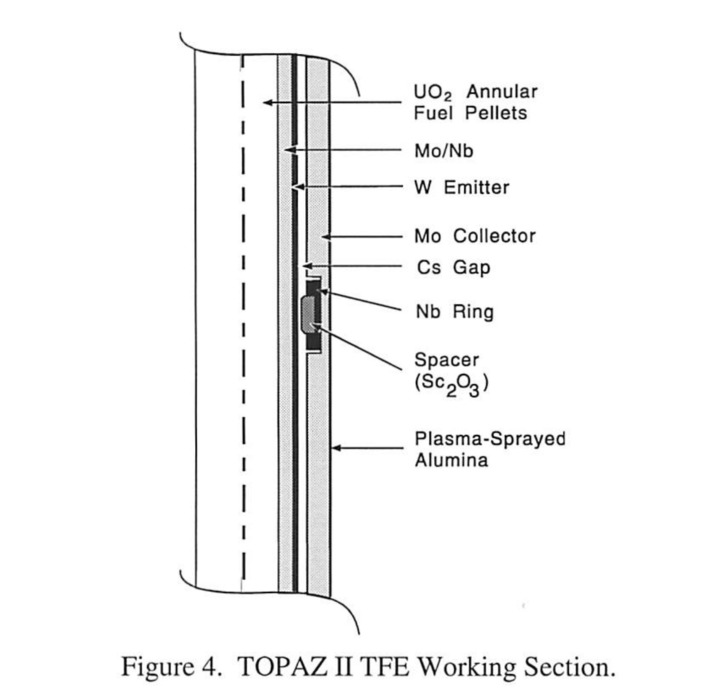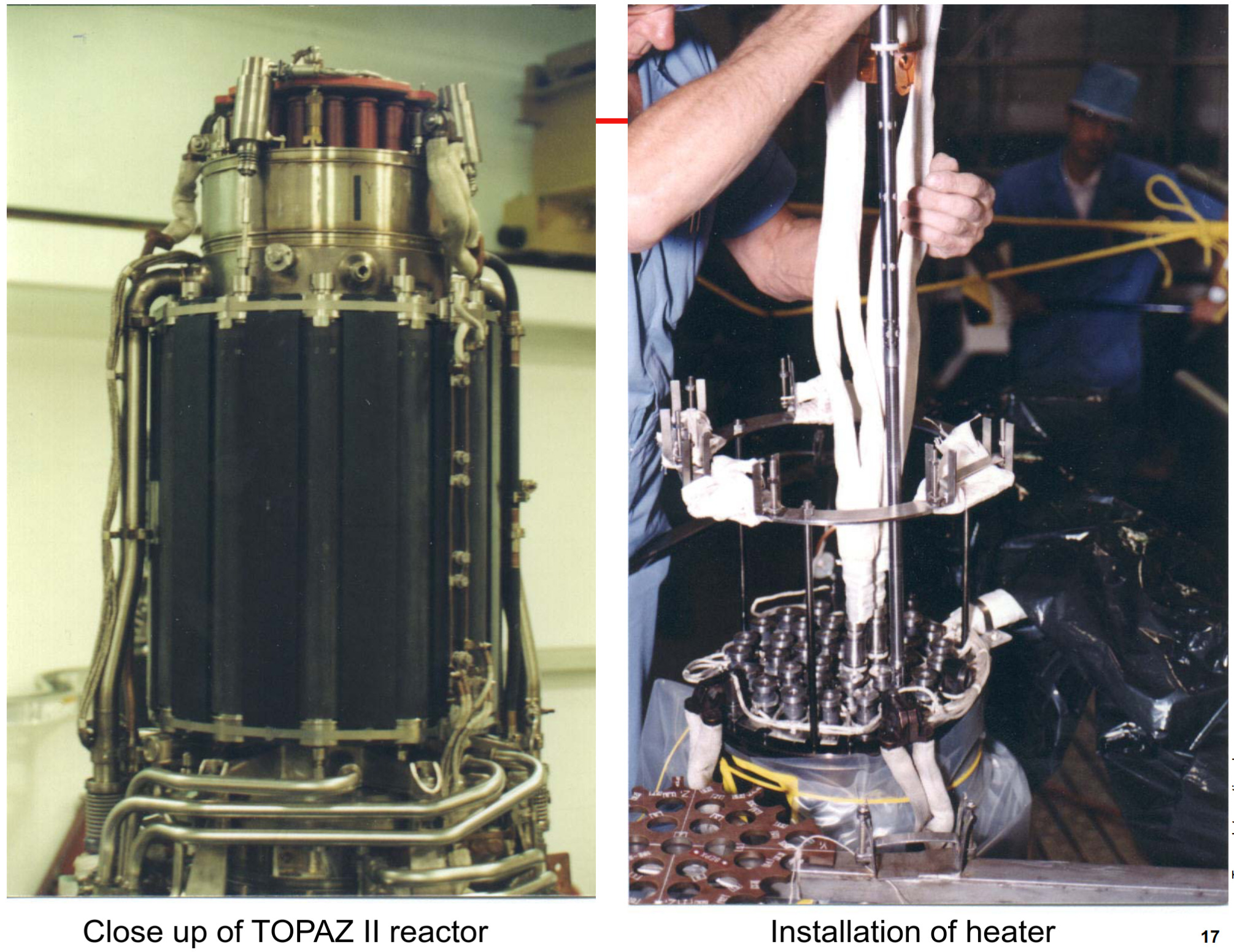The story of the TOPAZ-II space reactors
By Nick Touran, Ph.D., P.E., 2025-05-13 , Reading time: 3 minutes

In the early 1990s, the USA purchased 6 TOPAZ-II space nuclear reactors from the USSR/Russia and flew them to New Mexico for testing. These reactors had thermionic cells around each of their 37 fuel pins: “Thermionic Fuel Elements” (TFE)!
The 115 kWt reactors used 93% enriched annular UO2 fuel elements, which transferred heat through a cesium gap, converting about 5% of the heat to electricity. Outside each pin, they had electromagnetically-pumped liquid metal sodium-potassium eutectic coolant.
The pins were dispersed in a ZrH1.85 moderator. There were beryllium reflectors and beryllium control drums, each with a 116° strip of boron absorber. They had LiH and stainless steel radiation shielding. The reactors consumed 0.5 g of Cesium per day.

In 1989, the TOPAZ lead came to Albuquerque and expressed interest in collaborating with the US. The US’s space concept, the SP-100, was over budget and behind schedule, so the TOPAZ could be a good deal. A series of meetings followed. At one, a model of the reactor was brought along and displayed.
In a true show of bureaucratic absurdity, when the Soviets tried to take their conference model back out of the USA, the NRC banned it, saying that it would be an export. This was back when the NRC was a true pain.
It does not matter that the display model of the space power plant is designed, built and owned by the Soviets, Susan F. Gagner, an N.R.C. spokeswoman, told The Albuquerque Journal.

On April 26, 1992, a C-141 and a C-130 came to pick up the first reactor. There was some trouble with identifying which of the 80+ crates had hazardous material, and at one point someone had to run to furniture stores to get some foam padding, but they got it loaded. However, the export officer at the St. Petersburg airport would not accept the export license because it had been signed by the USSR, which had in the meanwhile ceased to exist! More meetings were had and eventually a new license was approved. Airplane maintenance and air clearance rights persistent, but eventually the delivery was made!
Another deliver of 4 more reactors was made in 1994.

The US did ground testing and planned to fly them. Ex-Soviet scientists came and helped at the University of New Mexico. Russian language training was provided. In the end, a flight test never happened due to budget constraints and anti-nuclear sentiment, though staff was proud of what they accomplished:
“We were able to convince critics and openly hostile groups that NEPSTP could be carried out safely. I believe that the success of our approach will set a valuable standard for all future space reactor missions.”
I wonder if we can dust these off and fly them now!?

References
- Voss, TOPAZ 2 system description
- Dabrowski, US-Russian Cooperation in Science and Technology A Case Study of the TOPAZ Space-Based Nuclear Reactor International Program
- Houts, Thermionic Programs of the Early 1990s – TFEVP and Topaz International Program
- Schmidt, THERMIONIC SYSTEM EVALUATION TEST: YA-21U. SYSTEM TOPAZ INTERNATIONAL PROGRAM
Big thanks to Jona Blocker who brought the TOPAZ-II story to my attention!
See Also
Reader comments